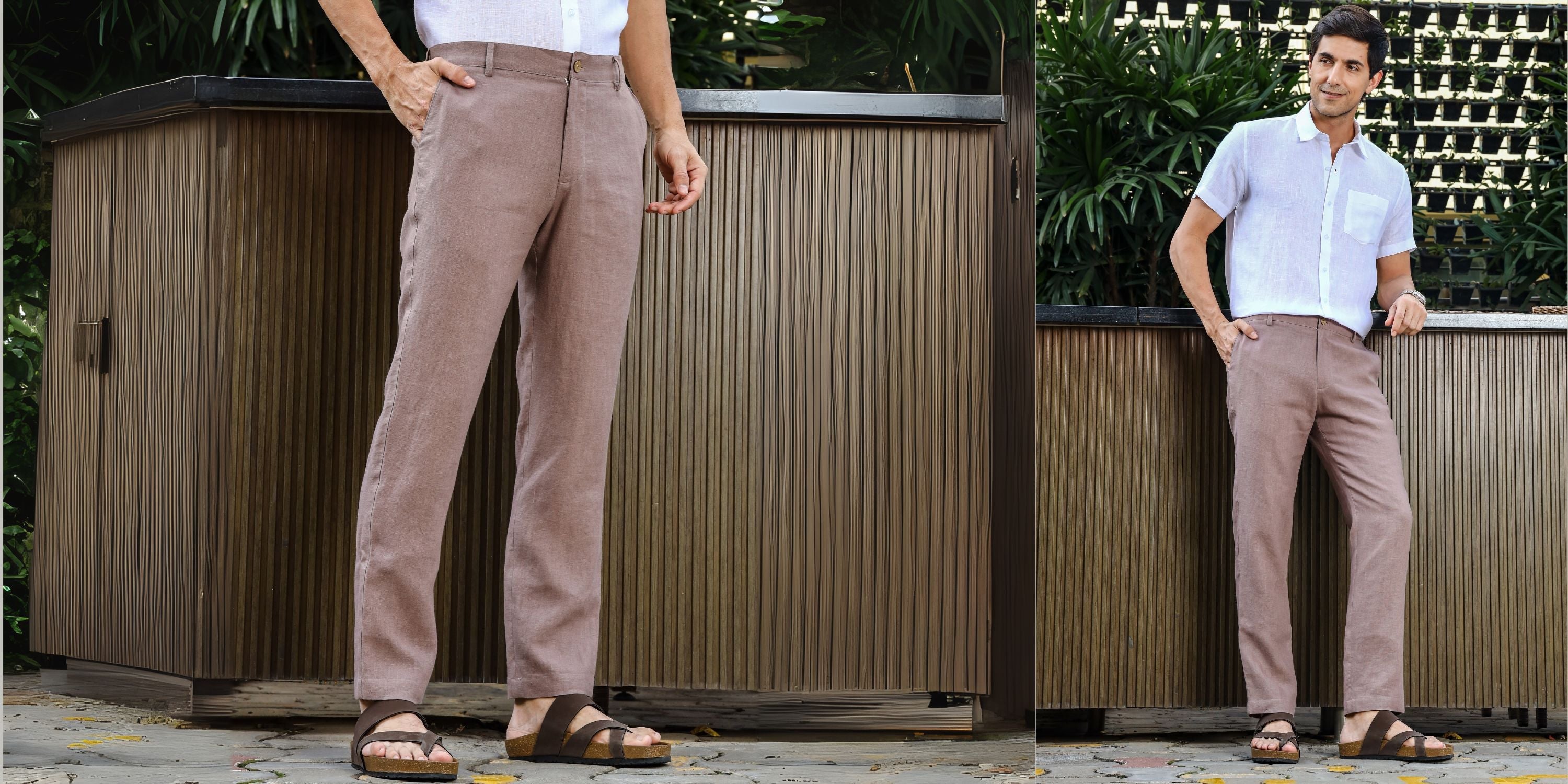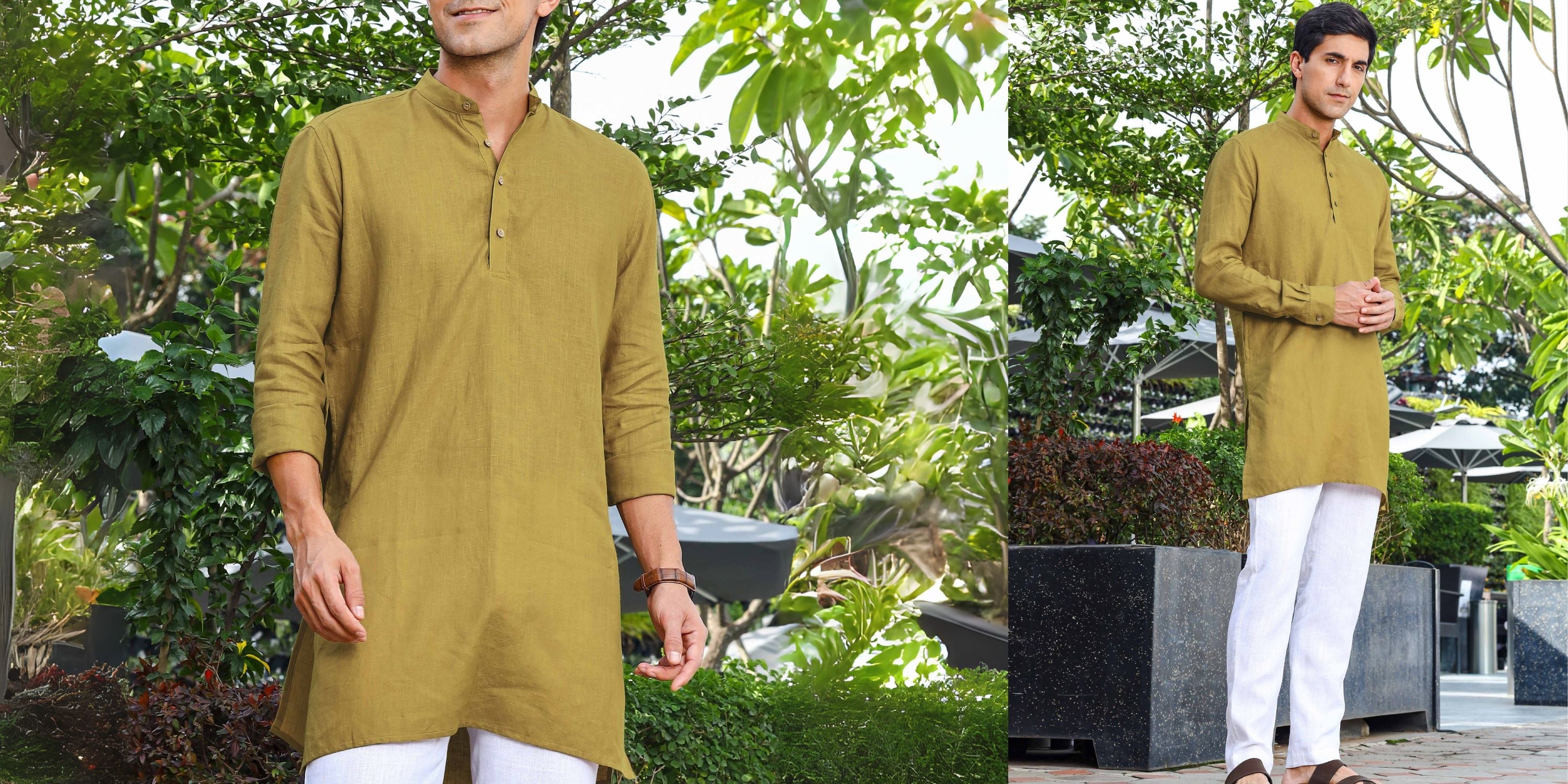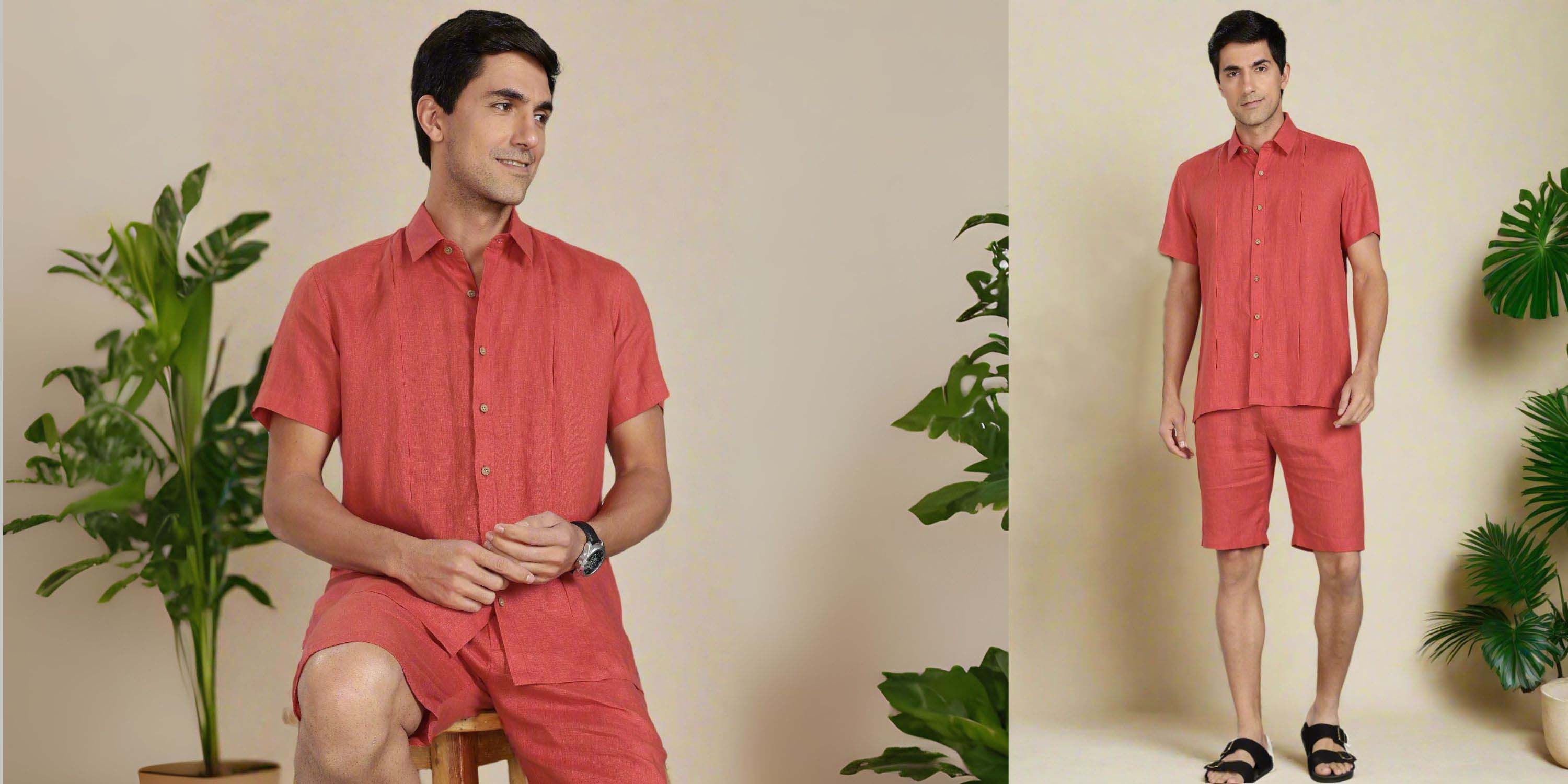Flax To Linen: From Sowing To Sewing – How is linen made
How does a seed become a shirt?
Ever wondered about that?
Unlike fabrics that are created inside a factory, linen fibre is all natural and the fact that the origins of the same lie in a seed, is proof.
A deep dive into the linen manufacturing process
1) Let’s start with the cultivation - Linen is made from the fibres of the flax plant, the scientific name for which is linum usitatissimum, which is where the term linen comes from. The plant is known for its slender stalks and has beautiful blue flowers and is normally cultivated in open fields. The plant thrives in cooler climates, and once grown, it is allowed to mature, before being harvested.

2) The plants are ready for harvest – The time for harvest often comes during later summer, which is right after the plants have flowered, but before the seeds ripen. The plants are either uprooted or cut really close to the ground and this has to be done very carefully, because the linen fibre is very delicate at this stage.

3) Rippling Flax – Rippling is a process in flax production where the upper part of flax bundles is combed through coarse combs to remove seeds. This step separates the seeds from the fibres, a crucial preparation for further stages in the transformation of flax into linen.

4) Retting the stalks – Once harvested, the flax stalks undergo a process called retting, wherein they are soaked in water and the inner stalk and tissues are allowed to rot away. This process is either done in open fields, allowing the dew to work its magic or in large tanks filled with water. Retting can take anywhere between a few days to a few weeks, but is a necessary step to remove the fibres from the woody core.

5) Letting it dry – The next step in the procedure is the drying – after the retting, the flax fibbers are allowed to dry, so that all the moisture is removed. This can either be done naturally in the sun or using machine dryers.

6) Breaking out the good stuff – Once the flax stalks have been dried, they are mechanically broken to remove the outer woody part and this process is known as breaking.

7) Scutching the fibres – The broken stalks are then scutched; this is a process that involves the beating of the flax and this allows for the removal of the remaining straw and woody particles, and what is left behind are flax fibres.

8) Hackling to get to the heart – The next step is known as hackling, in which the flax fibres are combed carefully to remove all the short fibres and any impurities. This process is also crucial, because it aligns the long flax fibres, ensuring that they are ready for spinning and are smooth enough for that.

9) Spinning the wheel – The long flax fibres, which are now refined, are ready to be spun into yarn and although traditionally, it would have been spun on a spinning wheel, these days, modern machines make the task easy. During the spinning process, the fibres are twisted together and that creates the yarn.

10) Weaving designs and more - The linen yarn is finally woven into linen fabric and this can be done using either traditional looms or modern weaving machines. From simple weaves to intricate designs, there is so much being done in terms of modern linen fashion!

While these are the most essential steps of the procedure of linen manufacturing, there are some other steps that follow.
One of the characteristics of linen is that it is naturally beige or greyish in colour, but it can be bleached to attain a pure white colour or it can be dyed in a range of colours.
After weaving, linen fabric is sometimes treated to enhance its texture, appearance, or durability. This can include:
- Calendaring – smoothing fabric with hot rollers
- Mercerizing – treating the fabric with chemicals that will improve the strength and lustre
- Softening – to make the fabric much softer to touch
Now the fabric is considered ready and finished, which means that it can be cut and stitched into the desired clothing, such as pure linen shirts, trousers, shorts and more.
At Linen Trail, we source the finest quality linen that comes from premium grade European flax and this linen cloth material is then designed and stitched into some of the most elegant and trendy linen garments!









